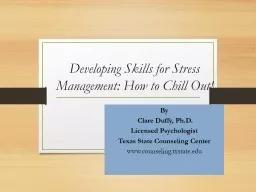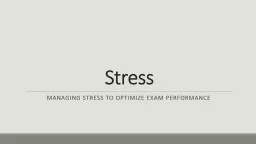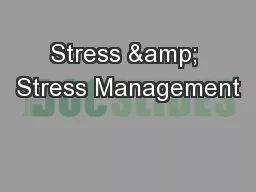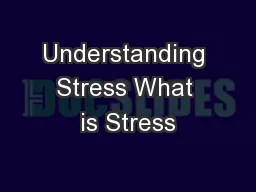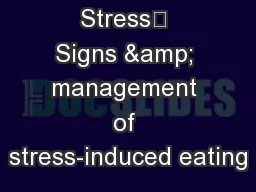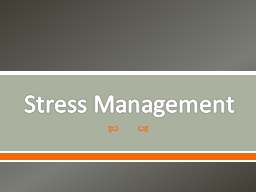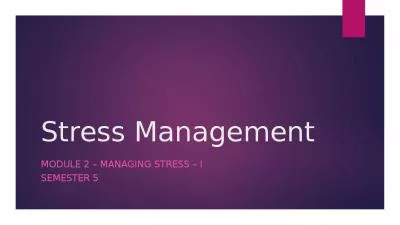PPT-Developing Skills for Stress Management: How to Chill Out!
Author : min-jolicoeur | Published Date : 2018-10-25
By Clare Duffy PhD Licensed Psychologist Texas State Counseling Center wwwcounselingtxstateedu 1 Overview Recognizing and Acknowledging Your Stress Sabotaging Yourself
Presentation Embed Code
Download Presentation
Download Presentation The PPT/PDF document "Developing Skills for Stress Management:..." is the property of its rightful owner. Permission is granted to download and print the materials on this website for personal, non-commercial use only, and to display it on your personal computer provided you do not modify the materials and that you retain all copyright notices contained in the materials. By downloading content from our website, you accept the terms of this agreement.
Developing Skills for Stress Management: How to Chill Out!: Transcript
Download Rules Of Document
"Developing Skills for Stress Management: How to Chill Out!"The content belongs to its owner. You may download and print it for personal use, without modification, and keep all copyright notices. By downloading, you agree to these terms.
Related Documents

